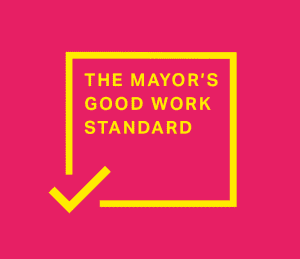People on lower incomes are just as likely to be active savers as those who earn higher amounts, once essential needs are met

Beyond Age and Income, a new report by Toynbee Hall, supported by Building Societies Association, explores people’s actual savings patterns.
Financial services providers should design and offer more products to people on lower incomes to encourage saving and build financial resilience among this underserved group, Beyond Age and Income, Encouraging Saving Behaviours finds.
The myth that people on lower incomes are not active savers is conclusively disproved by a new report from Toynbee Hall, supported by the Building Societies Association today.
Beyond Age and Income: Encouraging saving behaviours, written by Toynbee Hall with support from The Building Societies Association, explores people’s actual savings patterns and considers how to help more people save. It finds that it is not our income or our age which predicts how much we save, but instead our attitude to saving which is key. The research also shows that people on low incomes are just as likely to have positive attitudes to saving as those on higher incomes.
Jim Minton, Chief Executive of Toynbee Hall, said:
“Savings matter. No matter how small, having money set aside for life’s ups and downs can significantly increase people’s financial resilience in an emergency and help them achieve their personal goals. This new research challenges the myth that it is only the wealthy who save. In fact it is whether people believe they can save that really matters, not how much they earn. Savings and account providers should have no fear about developing products for people on low incomes and giving the message that everyone is a potential saver, irrespective of age or income. By offering offer tailored, accessible and simple products – without additional costs – everyone can be helped to save whatever amount works for them.”
The Report used consumer surveys and interviews, as well as input from financial institutions, to co-produce a set of recommendations for financial service providers aimed at supporting more people start saving.
The findings challenge the common assumption that people naturally save proportionally more as they get older and earn more. In fact, the research finds that an individual’s attitudes and behaviours are the most important factors in predicting how much of their income they save, not their actual income or age.
While people on higher incomes who save do indeed tend to have higher absolute sums in savings, once adjusted for income, there is no clear pattern that people with higher incomes are saving a higher percentage of their earnings. These findings suggests that people with lower incomes can be equally active in saving, once their essential needs have been met.
Jim Minton added:
“This report also gives a road map for future public campaigns for savings. These should focus on encouraging attitudes and behaviours of individuals from all age and income bands, not just those on higher incomes. It is vital that we tackle the belief that saving is something you only do once you have reached a certain level of income, and challenge the myth that people on low incomes can’t save. In fact, people on lower incomes do want to save and appropriate savings products and services should be made available to encourage everyone to begin saving a very small amount of money regularly. This will enable more people to have some emergency savings, however small.“
The report shows that people often have multiple motivations to save at any one time. They might be simultaneously saving for two competing goals, such as an unspecified rainy day and to pay for a specific items, such as a car or a holiday. So savings product design should also factor in that individuals often have multiple motivations to save. Importantly, the most common motivator – saving for unexpected emergencies or life events – could provide the path of least resistance to encourage non-savers to begin saving, since the majority of people are likely to identify with this universal need.
In the foreword to the report, Mike Regnier, Chair of the Building Societies Association said:


























